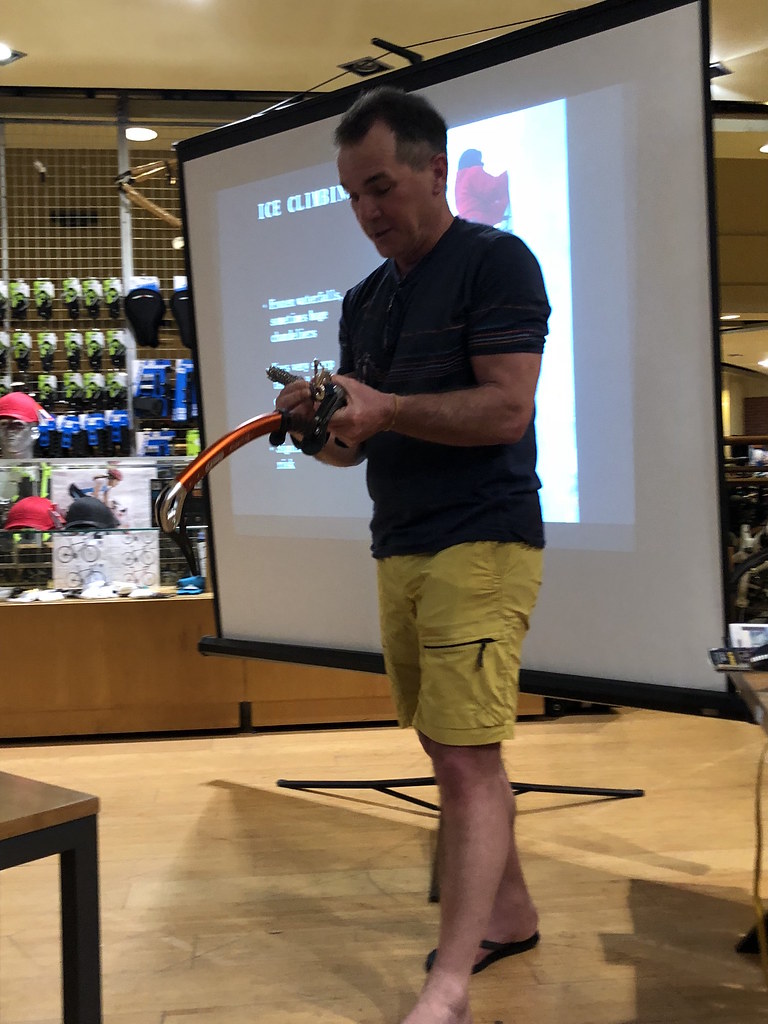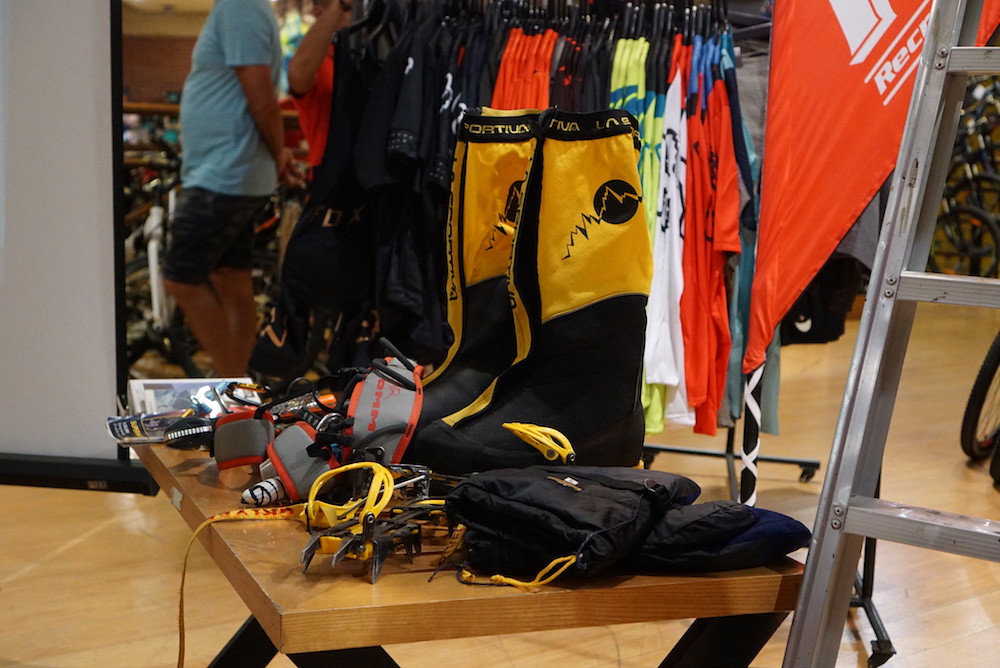
R.O.X. Outdoor Guide: High Altitude Survival By Stuart Leonard
A sizeable section of the hike that Cali and I are doing late this year will be done in high altitude. When we found out that an accomplished alpine climber was going to be in town to do a talk, we just knew we should go.
Stuart Leonard is your mountain man
Stuart Leonard is an mountaineer, climbing instructor, and skyrunner who has traveled, guided, or joined expeditions in the Himalayas, the Alps, and the Andes. We’re talking about big mountain, eight-thousander level climbing where the stakes are at its highest.
Stuart is a natural teacher. He’s good at boiling things down. Super impressed with how Stuart broke down a technical gear explanation by using simple terms that a non-climber would understand. Years of guiding must’ve thought him this skill.
I had expected a man like him to brag endlessly about his climbs, but Stuart did none of that. His English humour sticks out as his most memorable trait, never forgetting to inject a joke or quip after giving a lengthy anecdote.
How To Make It In High Altitude
These were the topics discussed over the 2-hour talk:
- Styles of climbing
- Route reading/finding
- Interpreting avalanche reports
- Navigation (non-GPS)
- Handling encounters with wild life
- Basic layering techniques from headgear, to which materials to choose for clothing, down to crampons
- Climbing equipment (On a sidenote: this part actually deserves its own talk. A Level 1 climbing course teaches you the intro. Stuart just gave an overview.)
- And the part where I was most excited about: Acclimatization techniques
5 personal questions – answered!
Stuart pretty much addressed to the group the 5 things I’ve always wanted to know about high altitude climbing.
How to strap on crampons
Insanely simple, it turns out haha. Those things were also incredibly light (at least the ones Stuart lent to us to try). Crampons are things you strap onto your boots to allow you to walk on icy surfaces without sliding off the face of the earth. The underside of crampons have teeth that into the ice. You just need to know which side goes in front and it’s pretty much like putting on a second pair of shoes.
Gear training

Any gear is really not that complicated – you just haven’t taken time to learn it. Most people who try on new gear – say, a crampon for alpine climbing – would only learn putting them on while they are on site. They expect the outdoor guide to teach them everything. While that’s the guide’s job, I personally think it’s one’s responsibility to be acquainted with the gear you’d need beforehand. Panic and fear can get in the way when you learn new things on site (that is, when you are on the actual mountain). I’d rather come prepared so I can focus on enjoying the activity.
Water situation in high altitude
This has always eluded me! I’ve known from several literature that mountaineers burn ice for drinking water. But how do they hike with it?! I learned from Stuart that the metal in vacuum thermos that we use at sea level tend to freeze in high altitude, thus makes drinking from it impossible. Plastic insulated mugs are a better option.
High altitude sustenance
For years now I follow a low-fat, no red meat diet. Rice, also no. The reality is the food I’ve quit are the things I need in high altitude. You need the right amount of fat to keep you warm up there, among other things. According to Stuart, the trick is in eating what you like – at least while you are in high altitude. It will not only sustain you but it will keep you happy and sustain your positive mood. In short, strict diets don’t have a chance there. I really wonder how vegan and vegetarian mountaineers fare up there! What a challenge it must be.
Alcohol vs AMS
If you really must, alcohol is better consumed when decreasing in altitude (i.e, descending a mountain), never when going up. Alcohol dehydrates you. When your body is deplete of water, your chances of getting AMS are multiplied. I’ve already had my bout with AMS so maybe I’ll stay off alcohol the entire Annapurna hike. Or maybe when we reach basecamp. Read on to learn more about the short and long term effects of alcohol. Also, see how you can reduce the risk.
– K

This event is part of R.O.X.’s Outdoor Guide, a series of events focused on outdoor preparedness. Follow R.O.X. Philippines on Facebook to stay updated.



